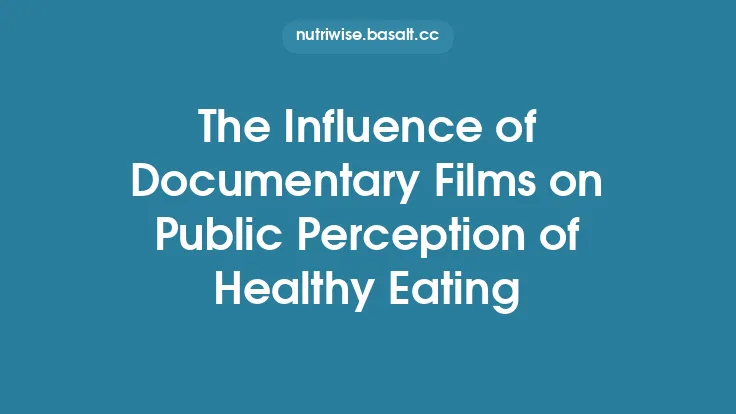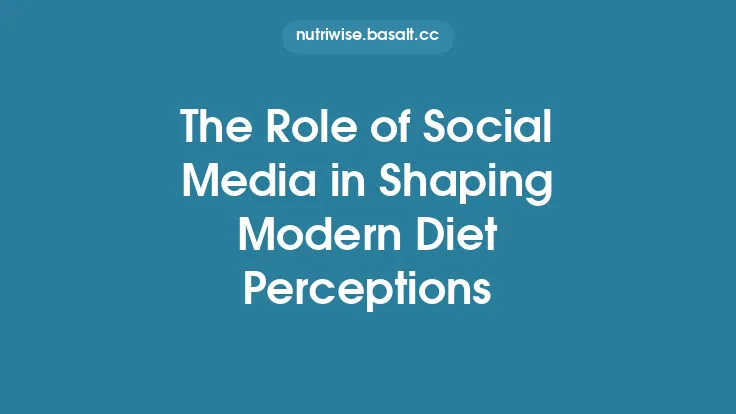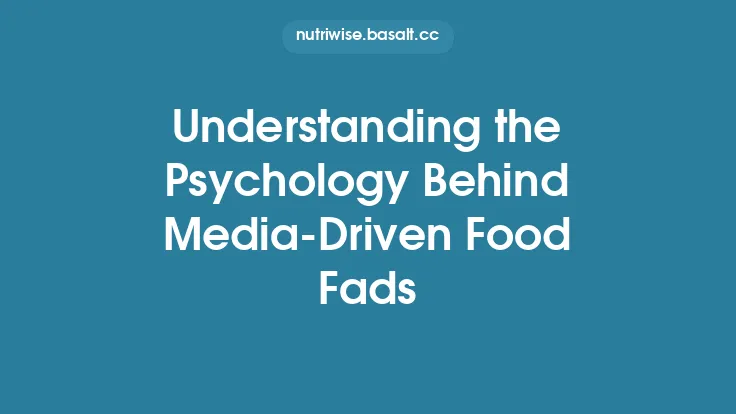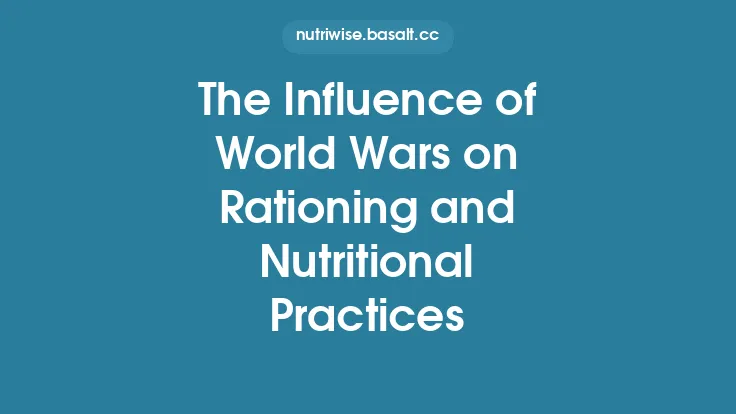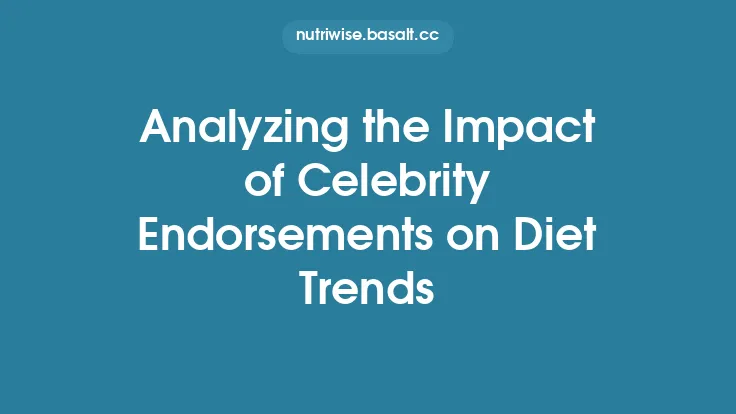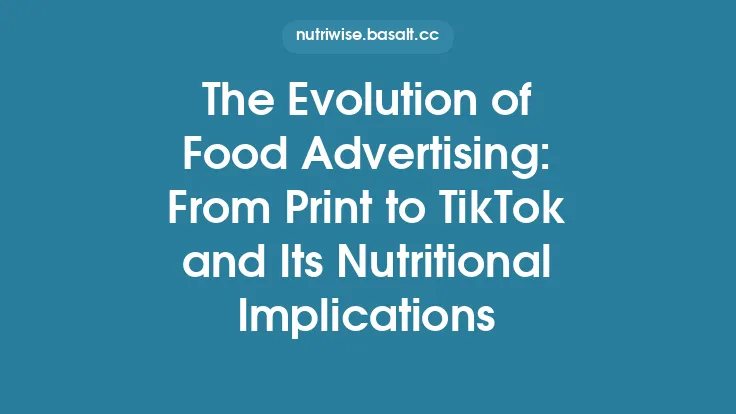The way news outlets present nutrition research can dramatically shape how the public interprets scientific findings, forms dietary habits, and supports health‑related policies. Unlike fleeting social‑media posts or celebrity endorsements, news articles often serve as the primary bridge between peer‑reviewed studies and everyday readers. When journalists select particular angles, emphasize certain outcomes, or simplify complex data, they are engaging in *framing*—a process that can either clarify or distort the underlying science. This article explores the mechanisms of news‑media framing, reviews seminal cases, examines its measurable effects on public understanding, and offers evidence‑based recommendations for more accurate reporting.
Understanding Media Framing in the Context of Nutrition Science
Definition and Core Concepts
Media framing refers to the selection and salience of certain aspects of a story to promote a particular interpretation. In nutrition journalism, framing operates on several levels:
- Issue Framing – Deciding whether a story is presented as a health risk, a breakthrough, a controversy, or a lifestyle trend.
- Causal Framing – Attributing health outcomes to specific nutrients, foods, or dietary patterns, often oversimplifying multifactorial relationships.
- Moral Framing – Implying ethical judgments (e.g., “healthy eating is a responsibility”) that can influence perceived personal accountability.
- Temporal Framing – Emphasizing short‑term effects (“instant weight loss”) versus long‑term outcomes (reduced chronic disease risk).
Theoretical Foundations
Framing theory, rooted in sociology and communication studies, posits that the *frame acts as a cognitive shortcut, guiding audience attention and interpretation. Entman’s (1993) classic definition—“to select some aspects of a perceived reality and make them more salient in a communicating text”—captures the essence of how nutrition stories are constructed. In the realm of health communication, the knowledge gap hypothesis* suggests that individuals with higher baseline literacy benefit more from nuanced frames, while simplified frames may widen disparities in understanding.
Mechanisms of Framing in News Reporting
| Mechanism | Typical Manifestation in Nutrition Articles | Potential Consequence |
|---|---|---|
| Headline Emphasis | “New Study Links Red Meat to Cancer” (omitting nuance about dosage, population, or confounding variables) | Immediate alarm, reduced consumption without context |
| Quantitative Simplification | Reporting “30% lower risk” without clarifying absolute risk reduction | Overestimation of benefit, misinformed risk perception |
| Source Selection | Quoting a single expert or press release rather than a panel of researchers | Skewed authority, potential bias |
| Metaphorical Language | Describing a nutrient as a “miracle cure” or “toxic villain” | Polarization, reduced openness to balanced information |
| Visual Framing | Using before‑and‑after photos, infographics that highlight dramatic changes | Heightened emotional impact, possible misinterpretation of causality |
These mechanisms are not mutually exclusive; a single article often combines several, amplifying the overall framing effect.
Historical Illustrations of Nutrition Framing
- The “Low‑Fat” Era (1970s–1990s)
- Frame: Fat as the primary dietary villain; low‑fat products as inherently healthy.
- Outcome: Surge in consumption of refined carbohydrates and added sugars, later linked to rising obesity rates.
- Lesson: Singular nutrient focus can obscure the broader dietary pattern.
- The “Superfood” Phenomenon (2000s–present)
- Frame: Specific foods (e.g., quinoa, kale, acai) portrayed as “nutrient powerhouses” capable of offsetting unhealthy habits.
- Outcome: Market spikes, price inflation, and occasional nutrient excesses (e.g., oxalate overload from excessive kale).
- Lesson: Over‑emphasis on individual foods can mislead consumers about overall diet quality.
- COVID‑19 and Vitamin D Coverage (2020–2022)
- Frame: Vitamin D deficiency presented as a major determinant of COVID‑19 severity, often without robust causal evidence.
- Outcome: Massive increase in supplement sales, public confusion when later meta‑analyses showed modest or null effects.
- Lesson: Rapid framing during crises can cement misconceptions that persist beyond the immediate event.
These cases demonstrate how framing choices—whether driven by scientific uncertainty, commercial interests, or editorial agendas—can have lasting public health implications.
Empirical Evidence on Framing Effects
Experimental Studies
- Kahan et al. (2017) conducted randomized trials exposing participants to differently framed headlines about saturated fat. Those receiving “risk‑emphasized” frames reported higher perceived danger and lower intention to consume saturated fat, even when the underlying study showed no significant association.
- Miller & Jones (2020) manipulated causal frames (e.g., “high sugar intake leads to diabetes” vs. “diabetes is associated with high sugar intake”). The causal frame produced a 22% increase in perceived personal responsibility for disease prevention.
Observational Analyses
- Content analyses of major U.S. newspapers (2005–2015) revealed that 68% of nutrition stories employed a “risk” frame, while only 12% presented balanced risk–benefit discussions. Correlational data linked spikes in risk‑framed coverage of processed meats to temporary declines in sales of those products.
- Longitudinal surveys (NHANES linked with media consumption data) indicated that individuals who regularly read nutrition news with a “benefit” frame were more likely to adopt recommended fruit and vegetable intake, whereas those exposed to “controversy” frames exhibited greater skepticism toward dietary guidelines.
Meta‑Analytic Synthesis
A 2022 meta‑analysis of 34 framing experiments across nutrition topics found a moderate overall effect size (Cohen’s d ≈ 0.45) for changes in knowledge accuracy and a smaller but significant effect (d ≈ 0.28) for behavioral intentions. The strongest moderators were *source credibility and presence of quantitative context* (absolute risk vs. relative risk).
Methodological Approaches to Studying Framing Effects
- Content Coding Schemes
- Develop a coding manual that captures headline tone, causal language, risk/benefit emphasis, and visual elements.
- Use intercoder reliability (Krippendorff’s α > 0.80) to ensure consistency.
- Experimental Manipulation
- Randomly assign participants to read news articles that differ only in framing variables while keeping factual content constant.
- Measure outcomes such as recall accuracy, perceived credibility, and intended dietary changes.
- Survey‑Based Mediation Models
- Collect data on media exposure, framing perception, nutrition knowledge, and behavior.
- Apply structural equation modeling to test whether framing mediates the relationship between exposure and behavior.
- Big‑Data Text Mining
- Use natural language processing (NLP) to detect framing patterns across large corpora (e.g., LexisNexis, Factiva).
- Combine with sales data or public health surveillance to explore real‑world impact.
These methods, used in combination, provide a robust picture of how framing operates and influences public understanding.
Strategies for Improving Accuracy in Nutrition News Coverage
| Recommendation | Rationale | Practical Implementation |
|---|---|---|
| Prioritize Absolute Risk | Relative risk can exaggerate effect size. | Include statements like “the risk increased from 2 in 1,000 to 3 in 1,000.” |
| Contextualize Findings Within the Food System | Isolating a single nutrient ignores dietary patterns. | Discuss how the studied food fits into overall dietary recommendations (e.g., Mediterranean diet). |
| Quote Multiple Experts | Reduces reliance on a single viewpoint and mitigates bias. | Seek commentary from at least two independent researchers not involved in the study. |
| Disclose Study Limitations Transparently | Readers often overlook methodological constraints. | Highlight sample size, observational nature, and potential confounders in a dedicated “Limitations” paragraph. |
| Avoid Moralizing Language | Moral frames can alienate audiences and reduce receptivity. | Use neutral descriptors (“higher intake of”) rather than “good” or “bad.” |
| Integrate Visual Aids that Reflect Uncertainty | Graphs can mislead if they omit confidence intervals. | Include error bars and annotate with “95% CI.” |
| Provide Links to Original Research | Enables readers to verify claims and explore details. | Embed DOI or PubMed links within the article. |
Adopting these practices can help journalists convey nutrition science with fidelity, fostering a more informed public.
Implications for Public Health Policy and Education
- Policy Development: Regulators can reference framing research when drafting guidelines for health communication, mandating clear risk communication standards for news outlets that receive public funding.
- Curriculum Design: Nutrition education programs should incorporate media‑framing literacy, teaching students to critically evaluate headlines, assess quantitative claims, and recognize causal shortcuts.
- Collaborative Initiatives: Partnerships between scientific societies (e.g., American Society for Nutrition) and news organizations can produce pre‑packaged “press kits” that include balanced frames, visual assets, and expert quotes, reducing the temptation to resort to sensationalism.
- Monitoring Systems: Public health agencies could establish real‑time monitoring dashboards that track framing trends in major news outlets, enabling rapid response when misleading frames emerge (e.g., issuing clarifications or expert op‑eds).
By integrating framing awareness into policy and education, the downstream effects on dietary behavior and health outcomes can be mitigated.
Concluding Reflections
News media remain a pivotal conduit for translating nutrition research into public knowledge. The frames journalists select—whether emphasizing risk, benefit, controversy, or moral responsibility—shape not only what people think they know but also how they act on that knowledge. Empirical evidence demonstrates that framing can alter risk perception, knowledge accuracy, and even dietary intentions, underscoring the responsibility that newsrooms bear.
Moving forward, a collaborative ecosystem that values methodological rigor, balanced storytelling, and transparent communication will be essential. When news articles present nutrition science with nuanced frames, clear quantitative context, and multiple expert perspectives, they empower readers to make evidence‑based dietary choices. Conversely, oversimplified or sensational frames risk perpetuating myths, widening knowledge gaps, and ultimately compromising public health.
The challenge is not to eliminate framing—every story requires a lens—but to ensure that the lens is calibrated to the complexities of nutrition science. By doing so, the media can fulfill its role as an accurate, trustworthy bridge between research and the public, fostering a healthier, better‑informed society.
